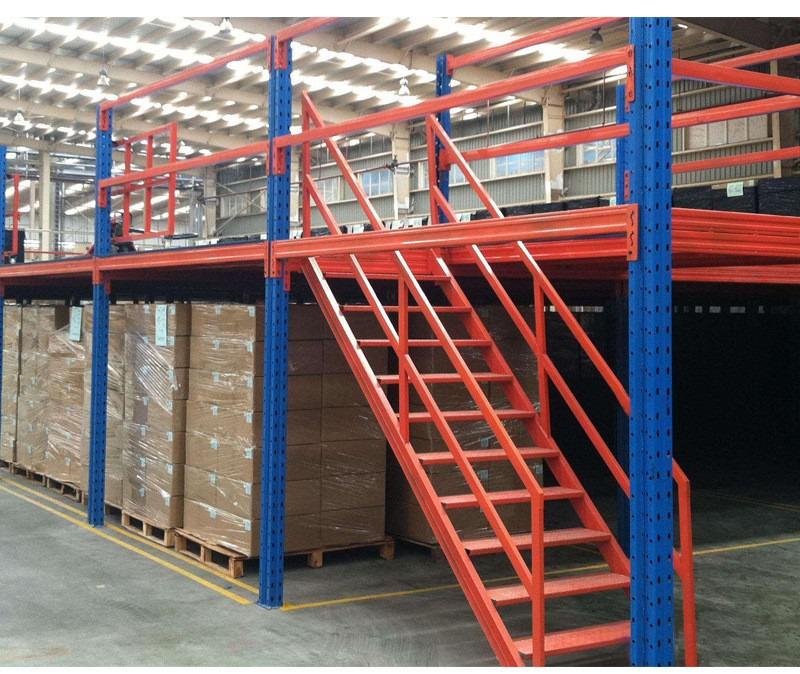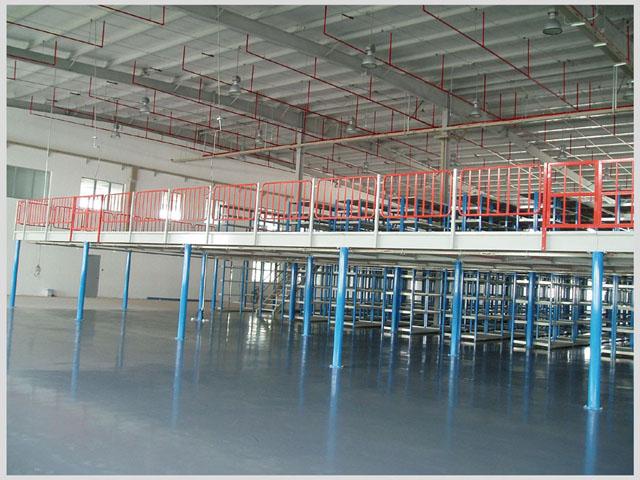In the relentless pursuit of operational efficiency within warehouses, distribution centers, and manufacturing facilities, industrial storage racking stands as the fundamental, often unsung, hero. Far more than just static metal frameworks, these sophisticated systems are engineered to maximize vertical space utilization, streamline material flow, enhance inventory accessibility, and ultimately drive significant cost savings and productivity gains. Choosing the right industrial storage racking is a critical strategic decision impacting everything from daily operations to long-term scalability and safety. This comprehensive guide delves deep into the essential aspects of industrial storage racking, empowering you to make informed choices for your specific logistics challenges.

1. Understanding the Core Types of Industrial Storage Racking
Not all storage needs are created equal, and thankfully, the world of industrial storage racking offers a diverse range of solutions tailored to different products, throughput requirements, and space constraints:
Selective Pallet Racking: The undisputed workhorse of warehouses. This ubiquitous racking system offers direct access to every pallet location via aisles. Forklifts can selectively store and retrieve pallets without moving others. Its simplicity, flexibility, and relatively low cost make it ideal for high-SKU environments with diverse product turnover rates. Common variations include conventional narrow-aisle and very-narrow-aisle (VNA) configurations.
Drive-In & Drive-Through Racking: Designed for high-density storage of homogeneous products with lower selectivity requirements. Pallets are stored on rails in deep rows. Forklifts literally "drive in" to place or retrieve pallets, typically on a Last-In-First-Out (LIFO) basis for Drive-In. Drive-Through allows First-In-First-Out (FIFO) access from both ends. This industrial racking system is perfect for bulk storage of items like beverages, packaged foods, or building materials where space is at a premium.
Push Back Racking: A high-density system operating on a LIFO basis. Pallets are loaded onto nested carts on inclined rails. When a new pallet is loaded, it pushes the previous pallet(s) back along the rail. Retrieval works inversely; removing the front pallet allows the next one to roll forward. This storage racking offers greater density than selective racking while providing slightly better selectivity than Drive-In systems.
Pallet Flow Racking: A dynamic, high-throughput FIFO system utilizing gravity. Pallets are loaded onto one end of an inclined track with wheel rollers. Gravity moves them smoothly towards the picking face as space becomes available. Ideal for high-volume, fast-moving perishable goods, or items requiring strict FIFO rotation (e.g., pharmaceuticals, food). This racking minimizes handling time per pallet.
Cantilever Racking: Specialized industrial racking designed for long, bulky, or awkwardly shaped items that don't fit well on standard pallet racks. Think lumber, piping, steel bars, furniture, or rolls of carpet. Arms extend from vertical columns, providing unobstructed frontal access for loading/unloading, often using specialized equipment like sideloaders or cranes.
Mobile Pallet Racking (Mobile Aisles): This innovative storage racking solution mounts entire rows of selective racking onto motorized bases that move laterally on floor tracks. Only one working aisle is required at any given time, drastically increasing storage density (up to 80% more than static systems). Ideal for valuable archival storage, cold storage (reducing energy loss), or facilities with extreme space constraints.
Mezzanine Systems & Structural Racking: While not purely pallet storage, industrial storage racking principles underpin structural mezzanines that create additional floor levels within a facility. Heavy-duty racking frames support mezzanine decks used for offices, packing stations, or smaller-item storage, effectively multiplying usable space.
2. The Compelling Benefits of Implementing Industrial Storage Racking
Investing in the right industrial storage racking system delivers a cascade of tangible operational and financial advantages:
Maximized Cube Utilization: The most obvious benefit. By efficiently using vertical space, often up to building clear heights, industrial racking dramatically increases storage capacity within the same footprint, delaying or eliminating the need for costly facility expansion.
Enhanced Inventory Management & Accessibility: Well-organized storage racking systems allow for systematic product placement, leading to faster and more accurate picking, put-away, and cycle counting. Clear visibility and direct access improve overall inventory control.
Improved Operational Efficiency & Productivity: Streamlined workflows, reduced travel time for material handling equipment (MHE), and faster access to goods translate directly into higher throughput and lower labor costs per unit handled. Systems like Pallet Flow optimize high-volume operations.
Increased Safety: Professionally designed and installed industrial storage racking, when properly used and maintained, provides a stable and secure environment for stored goods and personnel. It minimizes the risk of product collapse and creates defined aisles and work zones. Safety features like rack protectors and column guards are integral.
Enhanced Product Protection: Properly supported pallets prevent product damage caused by stacking directly on the floor or unstable piles. Features like wire mesh decking or pallet supports ensure stability within the racking bay.
Scalability & Flexibility: Many industrial racking systems, particularly selective racking, are modular. This allows businesses to easily reconfigure layouts, expand storage capacity, or adapt to changing inventory profiles as needs evolve.
Optimized Use of Material Handling Equipment (MHE): Racking systems are designed to work synergistically with specific types of MHE (e.g., reach trucks for VNA racking). This ensures equipment is used efficiently and safely within the designed parameters.

3. Critical Factors in Selecting the Right Industrial Storage Racking
Choosing the optimal industrial storage racking system is a complex decision requiring careful analysis of numerous factors:
Product Characteristics: Weight, dimensions (pallet size, overhang), shape, fragility, and whether products require FIFO or LIFO access are paramount. Heavy loads demand robust racking beams and frames.
Inventory Profile & Turnover (SKU Velocity): Number of SKUs, quantities per SKU, and how quickly items move (fast, medium, slow movers). High-SKU, variable turnover often suits selective racking, while high-volume homogeneous goods suit drive-in or flow racking.
Throughput Requirements: The volume of goods moving in and out daily. High-throughput environments benefit from dynamic systems like pallet flow or optimized selective layouts with ample access points.
Available Space & Building Constraints: Clear ceiling height, floor conditions, column locations, door positions, and overall warehouse dimensions. Height dictates potential vertical storage; floor strength determines racking load capacity limits; obstructions impact layout.
Material Handling Equipment (MHE): The type, capacity, and maneuverability of forklifts or other handling equipment directly determine suitable aisle widths and racking configurations (e.g., VNA racks require VNA trucks).
Budget: Initial purchase and installation costs vary significantly between industrial storage racking types. Consider total cost of ownership (TCO), including maintenance, potential reconfiguration costs, and the long-term ROI through space savings and efficiency gains.
Future Growth Plans: Select a system that offers flexibility to scale up or adapt. Modular racking provides the most straightforward path for future expansion or reconfiguration.
Safety & Regulatory Compliance: The system must be designed and installed to meet or exceed relevant local and international safety standards (e.g., OSHA, EN, RMI specifications). Seismic requirements may also apply in certain regions.
4. Safety: The Non-Negotiable Priority with Industrial Storage Racking
Industrial storage racking systems handle immense loads at height, making safety an absolute cornerstone. Neglecting safety can lead to catastrophic failures, injuries, fatalities, and massive financial losses:
Professional Design & Installation: Systems must be engineered by qualified professionals and installed according to manufacturer specifications and relevant codes (like those from the Rack Manufacturers Institute - RMI). This ensures structural integrity under expected loads.
Load Capacity Awareness: Every component (uprights, beams, wire decks, pallet supports) has specific load ratings. Exceeding these ratings is a primary cause of racking collapse. Load plaques must be clearly visible on every bay.
Proper Loading Practices: Pallets must be undamaged, stable, and centered on beams. Weight must be evenly distributed. Avoid overhanging loads beyond design limits. Never climb on racking.
Impact Protection: Forklift collisions are a major hazard. Installing robust racking protectors (column guards, post protectors, end-of-aisle guards) and wheel guards at critical points significantly reduces damage risk.
Regular Inspections: Implement a formal, documented inspection program:
Operational Inspections: Daily/Weekly visual checks by trained staff for obvious damage (bends, dents, loose components).
Expert Inspections: Comprehensive, formal inspections by qualified personnel (internal or external) at least annually, or more frequently in high-traffic/high-risk environments. Follow RMI or equivalent guidelines.
Damage Protocol: Establish a clear "RED TAG" system. Any damaged component must be immediately unloaded, the area secured, and the component repaired or replaced by qualified personnel before reuse. Never use damaged industrial racking.
Aisle Discipline: Maintain clear, unobstructed aisles. Enforce pedestrian exclusion zones from MHE operating areas.
Seismic Considerations: In earthquake-prone zones, industrial storage racking requires specific seismic design and bracing to resist lateral forces.
5. Installation, Maintenance, and Long-Term Care of Racking Systems
The journey doesn't end with selecting and installing the industrial storage racking; ongoing care is vital for longevity, safety, and performance:
Professional Installation: Always use certified installers recommended by the racking manufacturer. Proper installation ensures the system performs as engineered and meets safety standards. This includes correct anchoring to the floor (where required), precise alignment, and verification of load capacities.
Routine Maintenance Checks: Integrate racking inspection into regular facility maintenance schedules. Look for signs of wear, corrosion, loose bolts, or any deformation. Pay special attention to beam locks and safety clips.
Prompt Repair of Damage: As per the safety protocol, damaged components must be addressed immediately. Repairs should only be conducted using manufacturer-approved parts and methods by qualified personnel. Welding on damaged industrial storage racking is generally not recommended unless explicitly approved by the original manufacturer/engineer.
Load Management: Continuously monitor loading practices. Ensure staff are trained never to exceed posted load capacities and to load pallets correctly. Avoid point loading or uneven weight distribution on beams.
Reconfiguration Management: Any significant change to the racking layout (adding height, moving bays, changing beam levels) must be reviewed and approved by a qualified engineer to ensure structural stability and continued compliance with safety standards. Don't modify the system arbitrarily.
Housekeeping: Maintain cleanliness around the racking. Spills, debris, or stored items in aisles can create hazards and hinder inspections.
Documentation: Keep meticulous records of the original design specifications, installation details, inspection reports, damage incidents, and repair actions. This is crucial for safety audits, liability management, and future planning.
Industrial storage racking is far more than mere shelving; it is a strategic asset that underpins the efficiency, safety, and profitability of your entire logistics operation. Understanding the diverse types available – from versatile selective racking to high-density drive-in and dynamic flow systems – is the first step. Carefully evaluating your specific needs based on product, space, throughput, and budget is paramount. However, the commitment to rigorous safety practices, professional installation, and diligent ongoing maintenance is what truly unlocks the long-term value and protects your people and inventory.
Choosing the right industrial storage racking partner – one offering robust engineering, quality manufacturing, expert installation, and ongoing support – is a critical investment. By implementing the right system correctly and managing it with safety and care as the highest priorities, you build a solid, scalable foundation for warehouse optimization that delivers significant returns for years to come. Remember, your storage racking is the backbone of your operation; ensure it's strong, safe, and smart.







